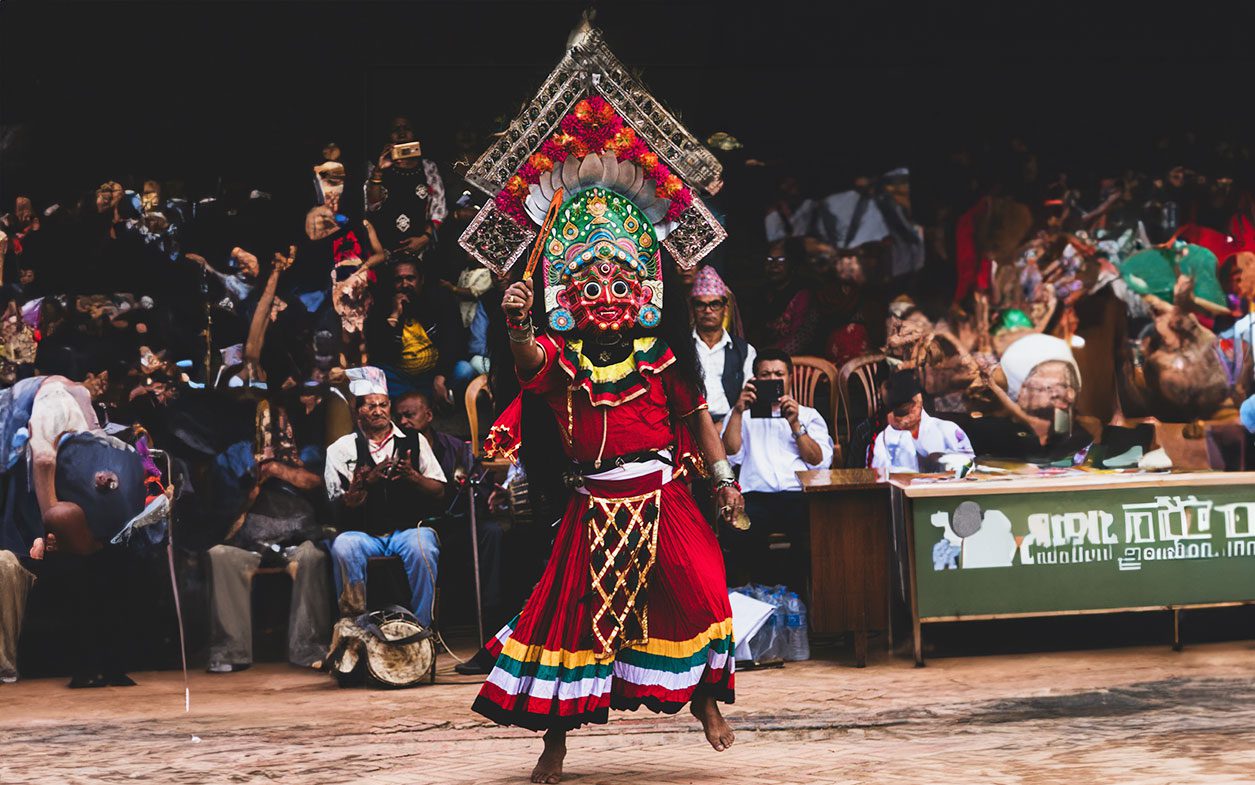
art of travel
What’s New
STAYS TO WATCH OUT FOR
New Hotels
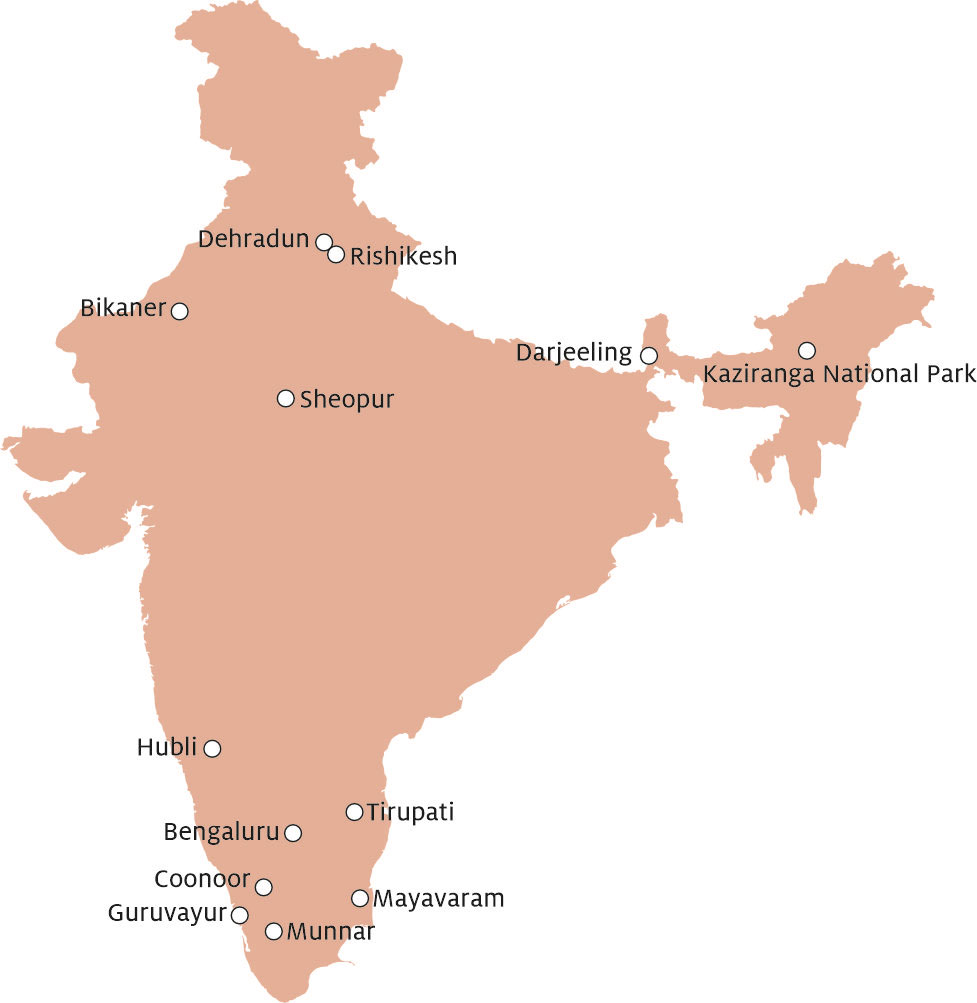
- Oneness, Rishikesh, Uttarakhand
- Punarnava Wellness Resort, Dehradun, Uttarakhand
- Chandra Raj Mahal, Bikaner, Rajasthan
- Chhota Haazri by The Rajbari Bawali, Darjeeling
- Ekante Bliss – IHCL SeleQtions, Tirupati
- Kuno Forest Retreat, Sheopur, Madhya Pradesh
- The Sanctuary at Paradise Hill, Near Coonoor, Tamil Nadu
- Svatma Ramnivas, Mayavaram, Tamil Nadu
- DoubleTree by Hilton Whitefield, Bengaluru, Karnataka
- Lemon Tree, Hubli, Karnataka
- Scenic – IHCL SeleQtions, Munnar, Kerala
- Lilac Hotels, Guruvayur (by Tamara), Kerala
- Kathoni, Kaziranga National Park, Assam
We Are Excited About
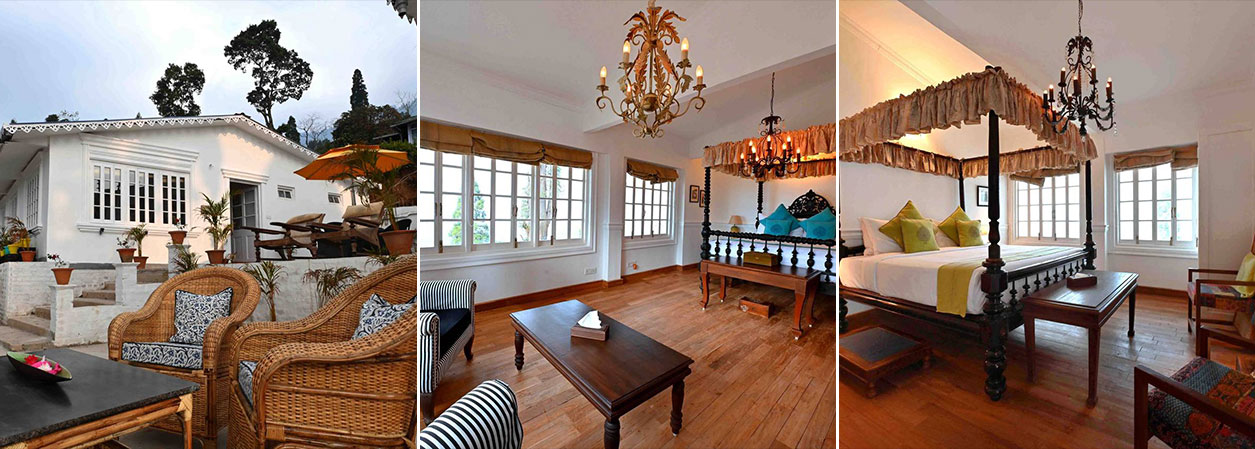
Chhota Haazri, Darjeeling, West Bengal
Chhota Haazri, with its two bungalows nestled amidst a lush green tea estate, is located just an hour away from Darjeeling. Each bungalow has 02 suites along with a dining room, sitting area, and kitchen. Guests can avail of a tea-tasting session, walk along the trail by the Rangeet River, enjoy a picnic or bonfire on the rocky banks, or simply unwind while admiring the charming antique pieces, vintage furniture, and the breathtaking views of the Kanchenjunga.
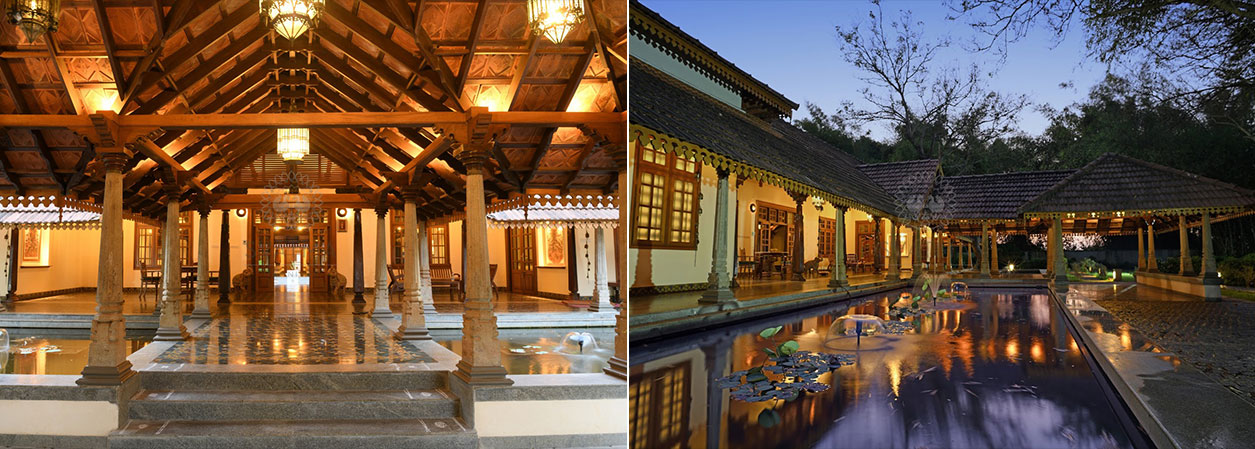
Svatma Ramnivas, Mayavaram, Tamil Nadu
Set in the village of Asikkadu, three hours from Pondicherry, is the brand-new centre of holistic wellness, Svatma Ramnivas Mayavaram. This 34-room property is surrounded by lush greenery and organic farms. The property has had a soft launch in February 2024 and will be fully operational shortly. Svatma Ramnivas makes for an ideal stopover for a couple of nights after the tour of the Thillai Nataraja Temple in Chidambaram. Guests can head to Tanjore later which is two hours away.
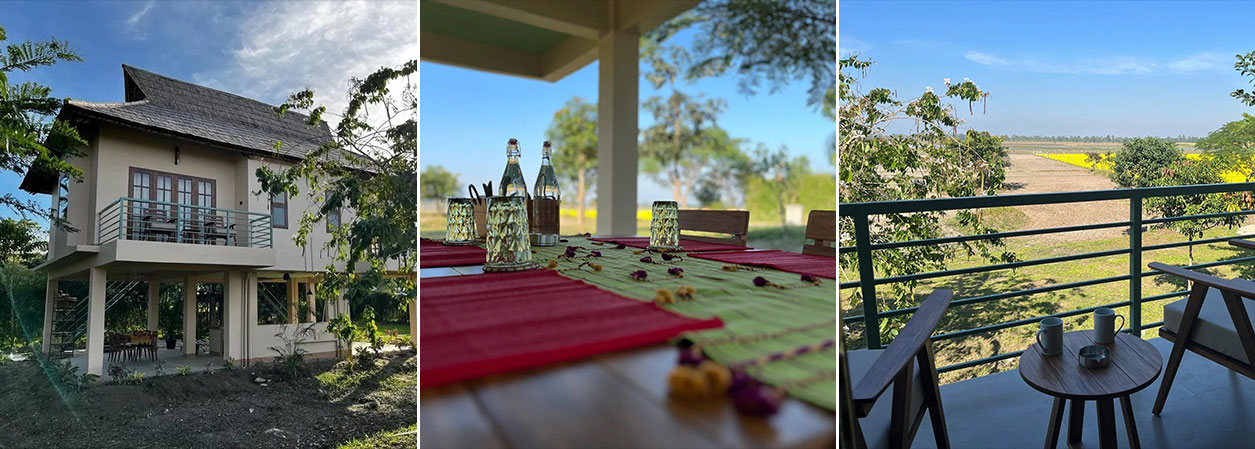
Kathoni, Kaziranga National Park, Assam
The 2-room Kathoni with its tall, brightly painted walls and handcrafted bamboo roofing is a brand new property located near the Eastern Range of the Kaziranga National Park which is renowned for its prolific birdlife, including the critically endangered Bengal Florican. Each room spans 460 square feet and features a spacious king-size bed, a work desk, an ensuite bathroom, and a comfortable living area that opens onto a private balcony with serene countryside views. Kathoni’s culinary offerings include authentic Assamese Cuisine cooked on woodfire, along with a variety of Indian and Continental dishes. All ingredients are sourced from their organic farm and the nearby villages.
Write to your relationship manager for more details
EXPERIENCES TO WATCH OUT FOR
New Experiences

- Working with Clay, Chandigarh
- A Stitch or Freedom, Delhi
- Purani Dilli Ki Tehzeeb, Delhi
- Angels Out of Stone, Jaipur, Rajasthan
- Tips and Tricks on Quilting, Ranthambore, Rajasthan
- Chocolate and Conversations, Foothills of the Western Ghats, Kerala
We Are Excited About
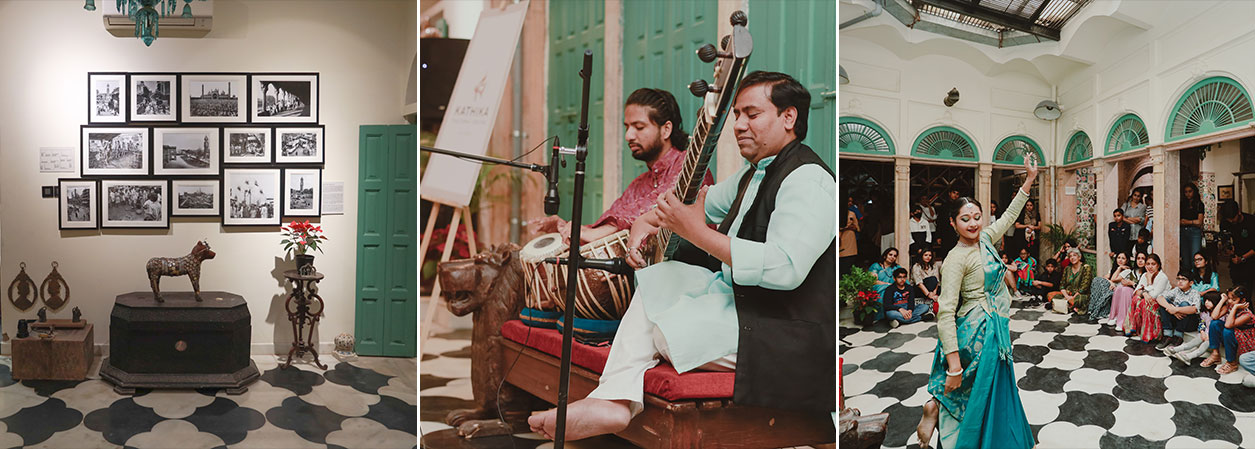
Purani Dilli Ki Tehzeeb, Delhi
Learn about the Tehzeeb (Etiquettes) of Purani Dilli (Old Delhi) in this one-of-a-kind museum and cultural centre situated in a historic neighbourhood during the city tour of Delhi. Experience the many colours of the medieval tradition of Mehfil (cultural gathering) through a specially curated cultural experience.

Chocolate and Conversations, Foothills of the Western Ghats, Kerala
This is a half-day guided trip to a village in the foothills of the Western Ghats, Kerala with abundant birdlife. Discover the alchemy behind chocolate-making and indulge in a delightful chocolate-tasting session. This tour is a remarkable blend of nature, culture, and delectable indulgence.
Write to your relationship manager for more details
ITINERARY OF THE MONTH
Kerala Unhurriedly 2.0
Kochi – Vengola – Neriyamangalam – Kambilikandam – Bison Valley – Kodikulam – Kumarakom – Mararikulam – Kochi
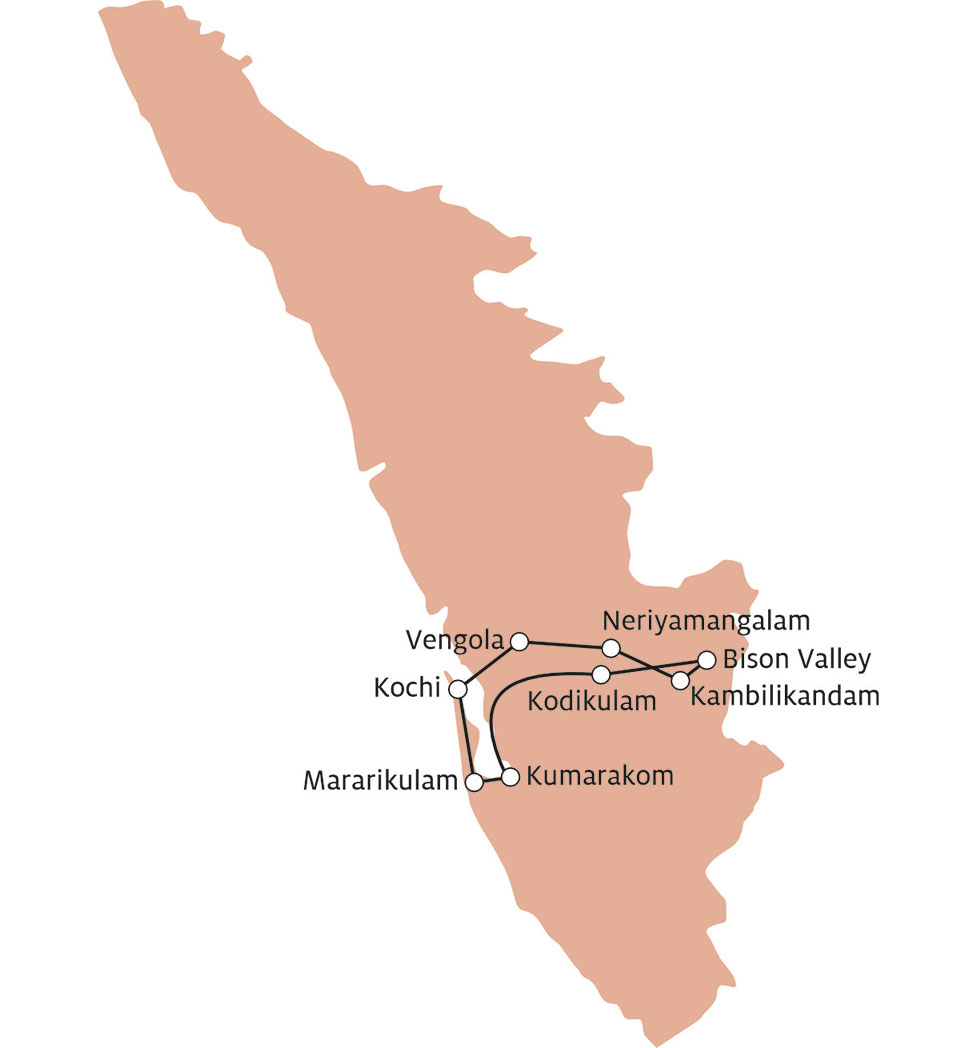
Highlights of the Tour
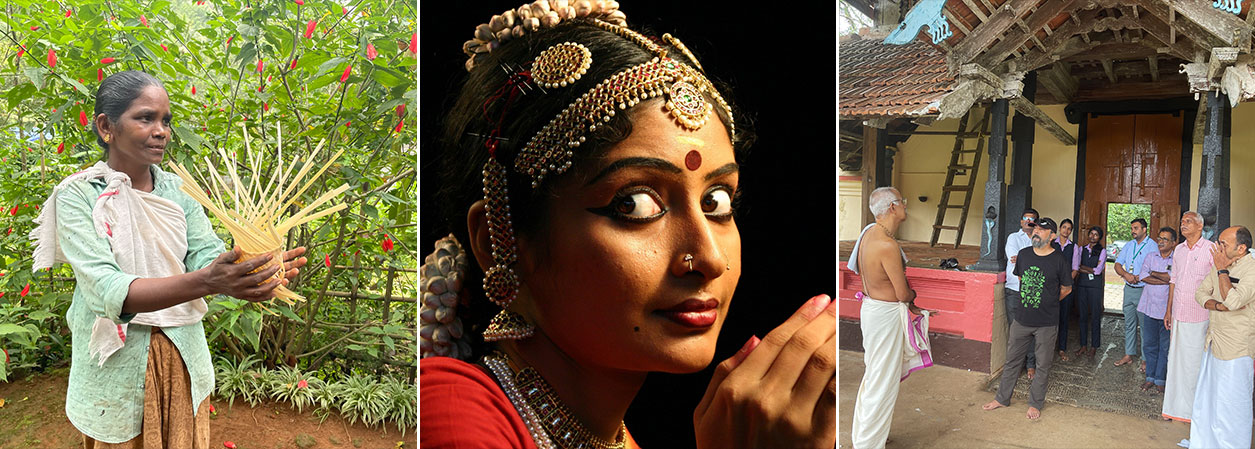
- Experience a unique cooking class which is a curious mix of music and good food.
- Discover the foothills of the western ghats, spot some rare birds, and indulge in a chocolate-tasting session
- Witness the indigenous techniques and skills in bamboo weaving during a hands-on workshop with a local tribal woman.
- Enjoy easy nature hikes in the hills of Kambilikandam
- Walk around in a tea garden of Munnar, participate in a private tea-tasting session, and visit the tea museum
- Appreciate the unique architecture, traditions, ritualistic art, and music of the Temples of Kerala in an authentic setting.
- Embark on a day cruise in the backwaters on a traditional rice boat
- Explore the Syrian Christian Churches in Kottayam
- Learn how to cook Meen Vevichathu (red fish curry), Istew, and other Syrian Christian delicacies in the backwaters of Kumarakom
- Rise early for a walk on the Marari beach to witness the local fisherman return from the sea with their catch
- Take a local train ride to Visit Fort Cochin and Mattancherry
Write to your relationship manager for more details.
NEW UPDATES
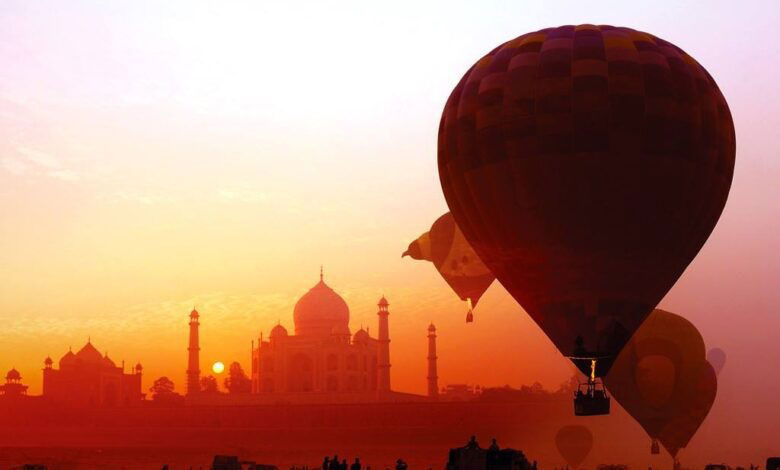
Hot Air Balloon Ride in Agra
Now, guests can enjoy a spectacular bird’s eye view of the Taj Mahal in Agra with Sky Waltz.

New flights/trains:
- Chandigarh – Dharamshala – Chandigarh nonstop by Indigo airlines thrice a week
- Nizamuddin – Khajuraho – Nizamuddin Vande Bharat operational daily except on Monday
Write to your relationship manager for more details
Stories from India

The Traditional Kodava Costume
For the ancestor-worshipping Kodava community of Karnataka, everything revolves around the River Kaveri. She is their protector deity, and the Kodavas not only go to her for everything; from birth to marriage to death, but also celebrate her birthday. They call the River Kaveri the Big Mother, name their children after her, and believe that their land, culture, tradition, and civilization flourished because of her blessings. Even the unique way of draping the saris of Kodava women is in her honour. Legend has it that the water of the River Kaveri pushed the pleats of the saris of the Kodava women from the front to the rear. Ever since then, it has been said, that in the traditional Kodava style of draping the sari, the pleats are tucked in at the waist at the back rather than in front unlike elsewhere in India
The Kodavas love their pork, coffee, and wine. They are known for their martial acumen and have once blazed through the international hockey pitch and have given India some of its most decorated Army officers. The Kodavas are also the only race in India who is permitted to acquire guns without a license. Kodava women, unlike the rest of the womenfolk of India, drape their sari in a very distinct and attractive fashion. The “pallu” (the loose end) doesn’t go over the shoulder but goes around the back, over the right shoulder. A beautifully crafted pin on the right collarbone holds it in place. Vastra, an exquisite ornate scarf is worn around the head and is of matching colour with the sari along with traditional jewellery. The Kodava men also have their distinct attire and weapons form an integral part of it. They wear a button-less, short-sleeved, V-neck long black coat called ‘Kupya’, reaching below the knees and a beautifully tasselled silken sash, at the waist, called ‘chaley’. A dagger called ‘peechekathi’ is tucked in the ‘chaley’ on the right side. The Kodavas wear their traditional dresses on special occasions such as marriages, festivals, and community gatherings.
Write to your relationship manager to organise a visit to a Kodava home with a Kodava meal for lunch during a Karnataka itinerary.
Sustainability and Us

Culinary Wisdom: The Sil Batta of India’s Kitchen
By Soma Paul, Product Manager, Destination Knowledge Centre
Ever since my mother moved to Gurgaon with me, she has been missing the taste of freshly ground spices in her food. In today’s world when everything is available in stores or online, who cares for grinding spices or chutneys manually in a grinding stone?
Imagine entering a traditional Indian kitchen, filled with the aroma of spices. The rhythmic sound of grinding echoes in the kitchen as the lady of the house skillfully rotates the pestle on the mortar, turning the spices into a fine paste. This method is appreciated for its ability to retain the authentic flavours of the spices and is widely used by many households in India even now, despite the difficulty in procuring them and the wide availability of modern appliances.
In my childhood days, the ‘sil batta’, a flat rectangular piece of stone and a cylindrical rounded stone, played an important part in my mother’s kitchen. I remember her grinding masalas, rice, lentils, and chutneys using the grinding stone with so much patience and passion, uncomplainingly. It was hard for me to comprehend from where so much strength came to those hands. After all, she wanted to serve the best food to her family!
While grinding, she used to share the stories of her childhood, recalling how my grandmother never used to allow her in the kitchen. She was very particular about her cooking techniques and always handled everything single-handedly. My mother learned cooking and grinding just by watching her. She always emphasised the connection between the traditional method of grinding spices manually and the depth of flavour it imparts to the dishes. The conversation used to be a blend of memories and culinary wisdom, making the simple act of grinding spices a cherished tradition passed down through generations. She still feels that the mixer with its steel blades is no substitute for the stone mortar and pestle. And I cannot agree more, especially when I still miss the taste of the food that my mother used to cook, even today.
Getting the “preferred” mortar and pestle wasn’t a simple chore. As we were living in Bhopal, my mother was never happy with the grinding stone available locally. Hence, we used to get one all the way from her hometown in West Bengal.
The ‘sil batta’, now weathered from years of use, symbolises more than a kitchen tool; it embodies a cultural heritage, a link to the past, and the essence of home-cooked meals in India. It is a story told through the hands of those who have lovingly ground spices for decades, preserving flavours and traditions.
Explore
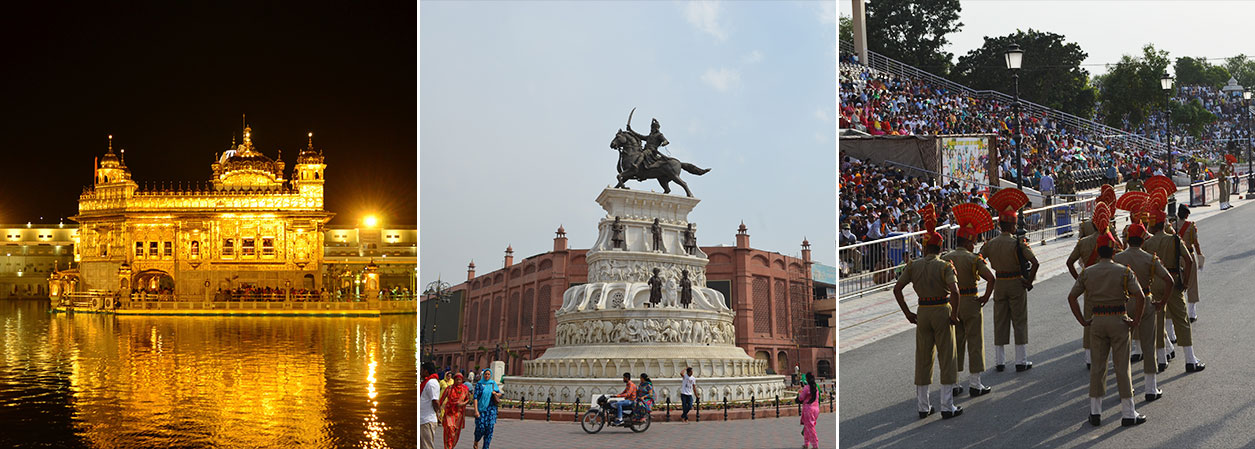
Amritsar – The Spiritual Capital of Punjab
From the Travel Diary of Inderjeet Rathod, Product Manager, Destination Knowledge Centre
Amritsar, the second-largest city in Punjab, is famous for the Harmandir Sahib, also known as the Golden Temple. The city has a diverse culinary scene and a vibrant lifestyle. Every part of Amritsar is steeped in history, from ancient tales to historic landmarks, lively markets, and colourful festivals, offering a glimpse into its illustrious past.
Best Time to Visit
The best time to visit Amritsar is during the winter season, i.e. from October to March. The weather is pleasant during this time and ideal for outdoor activities and exploration. The months of December and January however can be a bit cold with occasional fog.
Must Do
- Spend time at Harmandir Sahib, also known as the Golden Temple, which serves as the spiritual epicenter of the Sikh community. Made primarily of white marble with copper gilding and a gold leaf-adorned dome, the Gurudwara’s unique architecture – its main complex is situated lower than the surrounding land level — is a symbolic representation of egalitarianism and humility. The temple’s four entrances, positioned in all directions, symbolise its openness to people of all castes, creeds, and nationalities. With over 200,000 daily visitors, Harmandir Sahib offers a welcoming space where volunteers engage in selfless service, including serving meals in the free community kitchen (langar), embodying the spirit of unity and compassion.
- Immerse yourself in the spiritually uplifting Palki Ceremony at night, a daily ritual at Harmandir Sahib where the Guru Granth Sahib is ceremoniously put to sleep. For Sikhs, the Guru Granth Sahib isn’t just a holy book but a revered living master whose sacred verses serve as the eternal spiritual guide.
- The walking tour whichprovides a glimpse into the rich heritage of Old Amritsar is a must do. The walk ends close to the main entrance of the Golden Temple, making it convenient to combine with a visit to the temple. The duration of the walk ranges from 3-4 hrs depending upon the interest of the guests.
Accommodation
Whether you’re seeking a comfortable stay near the iconic Golden Temple or a peaceful retreat away from the bustling streets, Amritsar has something for everyone!
Some of the well-known Hotels and Resorts in Amritsar are –
- Taj Swarna (Five Star)
- Hyatt Regency (Five Star)
- Le Meridian (Five Star)
- Welcomhotel Amritsar (Four Star)
- Radisson Blu (Four Star)
- Ranjit Svaasa (Heritage Boutique)
- Holiday Inn (Four Star)
- Courtyard by Marriott (Four Star)
- Ramada Amritsar (Four Star)
- Park Inn by Radisson (Four Star)
- Fairfield by Marriott Amritsar (Four Star)
- Fortune Inn Heritage Walk Amritsar (Four Star)
- Golden Sarovar Portico (Three Star)
- Ranjit Vilas (Boutique)
Accessibility
Amritsar Railway Station is located right in the middle of the city. It is connected by direct trains to major Indian cities like Delhi, Jammu, Mumbai, Nagpur, Calcutta and Chandigarh.
Sri Guru Ram Das Jee International Airport, Amritsar is about 13 km away from the city centre in the North-West direction.
Weaving it into an itinerary
Delhi – Amritsar – Dharamshala – Pragpur – Shimla – Delhi
Write to your relationship manager for more details
Inspiration

Book Review by Bene Eapen
Chasing the Rainbow: Growing up in an Indian village
“Characters follow the theme of a Story and the words are merely added by the author to represent the thoughts of the character”
In the words of Ruskin Bond: I Observe, Recollect and Reflect.
According to me, Manoj Das is an extremely versatile and prolific writer, who happens to be at the top among the list of India’s short story writers. He writes in English and Odiya (Oriya) with equal elan. Manoj Das was born in a small coastal village named Shankari in Balasore district, Orissa State. Since 1963, he has been living at Sri Aurobindo Ashram, Pondicherry.
Chasing the Rainbow is a vivid account of the childhood experiences of the author. The book leads us to a serene and quiet life of a village by the sea and the enchanting worlds of a few rural spots wherein a dreaded butcher turns out to be a messenger from a Goddess. The author paints a scenic description of village life. He creates an intricate melange between the sea and the village nearby through his interesting stories. He takes us along to his village Sankhari district Balasore, bordering Midnapore district of Bengal or to the time spent in his uncle’s home in Koraput bordering Andhra Pradesh.
The author narrates enthralling tales from his childhood. Sizeable stories are from before India’s Independence. He mentions that he lived in a village in Odisha which was left unperturbed from the stirrings of the freedom struggle of the nation. A ‘gora’ (white Englishman) had never set foot in the village and neither did they witness a vehicle being driven. The village administration was headed by the President, a person appointed by the British to govern around twenty villages. And the author had the privilege of being the President’s son.
Even though his father was appointed as a President, they lived a very humble life and the author wandered to every nook and corner either alone or with his friends. Each story accentuates on the escapades with charm and delight a child experiences while discovering new places and encountering new challenges. The book has around 28 stories and is covered in 160 pages which do not act as a daunting task for readers to read it with ease.
One of My favourite paragraphs: 16th story: Murder Atop a Tree
“An invasion of the village by a troop of monkeys was full of excitement for children, though for the owners of small orchards and farms it was an invasion that had to be fought without the slightest delay. Our area had several troops of monkeys, but each troop seemed to enjoy territorial rights over a specific zone. The troop that looked upon our village as its Zamindari had a leader notorious for directing his operations with exemplary stealth. He would never lead his troop to its chosen target through the locality but would take a detour to reach. The monkeys would then fan out and, distributing themselves all over the ground or the trees and feast on the fruits and vegetables noiselessly”
Festival to Watch Out For
Biska Jatra, Bhaktapur, Nepal
14th April 2024

Biska Jatra is the largest festival of Bhaktapur that marks the arrival of spring and the Nepali New Year. It is celebrated for nine days in mid-April with various rituals and events, such as erecting a huge wooden pole (lyo sin dyo), pulling of chariots, and throwing vermilion powder (sindoor). Thousands of people travel from different parts of Nepal to Bhaktapur to participate in the celebrations.
Origin and Observations
Biska Jatra has a history that dates back to the Licchavi Kings of Nepal (2nd BCE to 750 CE). According to a legend, the festival commemorates the death of two serpents that caused the death of many Licchavi kings.
The main attraction of the Jatra is the 25 metre (82 feet) long wooden pole depicting the malevolent serpents. On New Year’s Eve, the pole is pulled out symbolising the triumph of good over evil. People participate in a tug-of-war to pull a chariot bearing statue of a local protector deity who helped the people of Bhaktapur to kill the serpents. The chariot is pulled from both sides, and the section of town that wins the contest gets to ride in the chariot.
Another interesting part of the celebration is Sindoor Jatra, which takes place on the second day of Biska Jatra. People smear each other with Sindoor (orange vermillion powder) as in the Holi festival and sing and dance to the tune of traditional music during the procession. The festival also showcases the traditional dances, music, costumes, and crafts of the Newar community.
Write to your relationship manager for more details
RESOURCES
SITE LINKS
CONTACT US
+ 91 (124) 4563000
Tower B, Delta Square, M.G. Road, Sector 25, Gurgaon - 122001, Haryana, National Capital Region of Delhi, India








